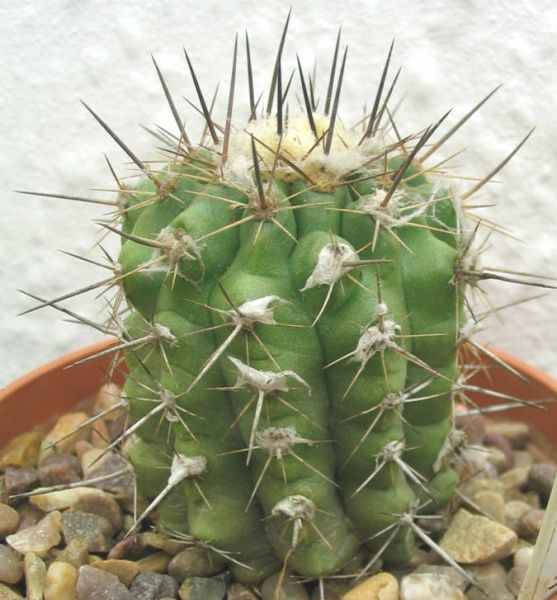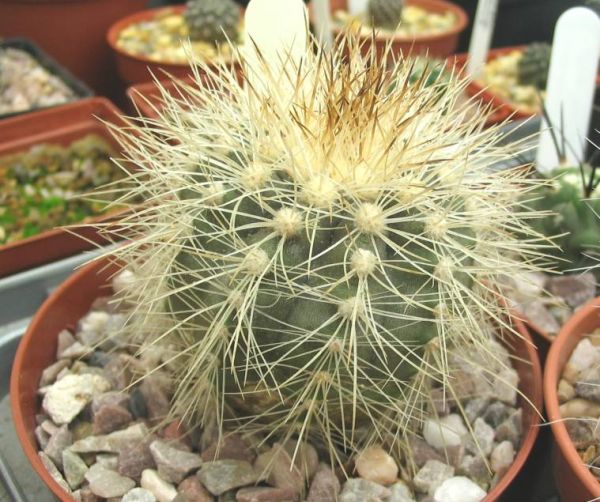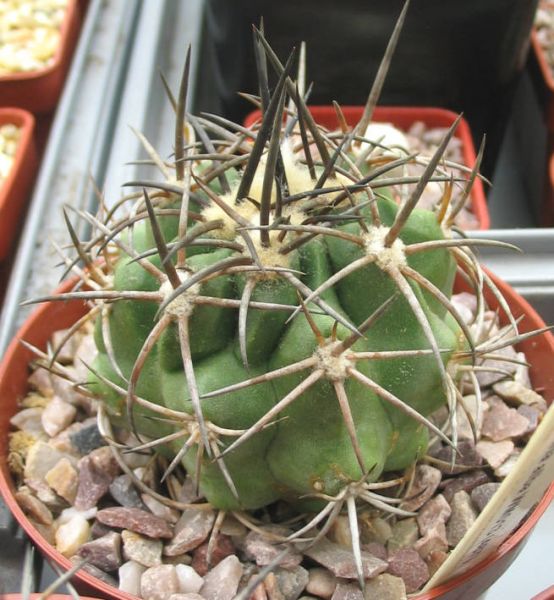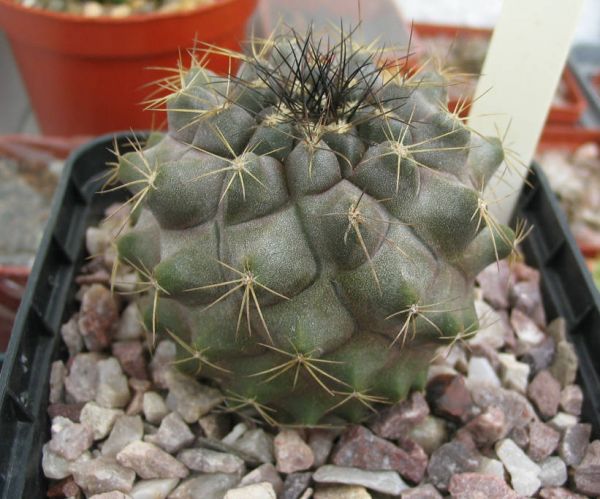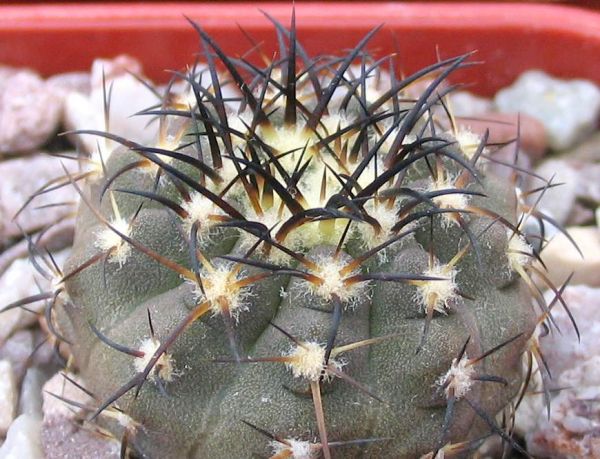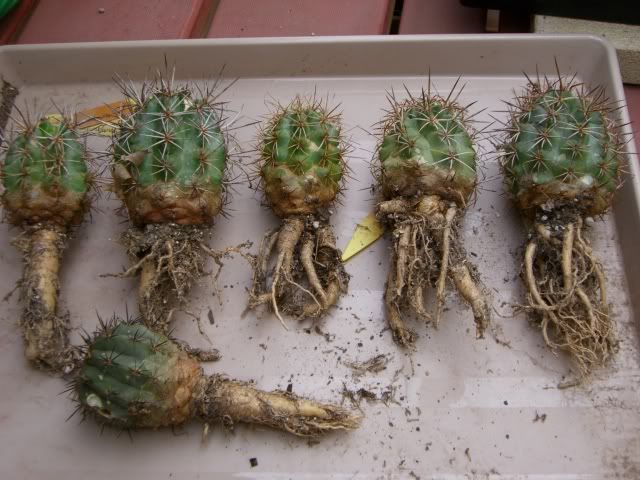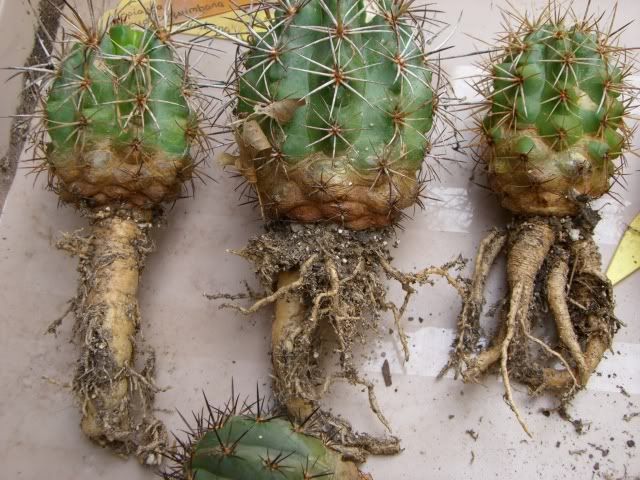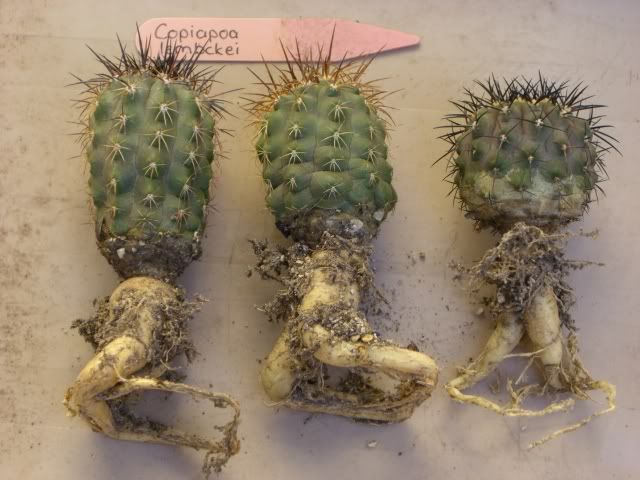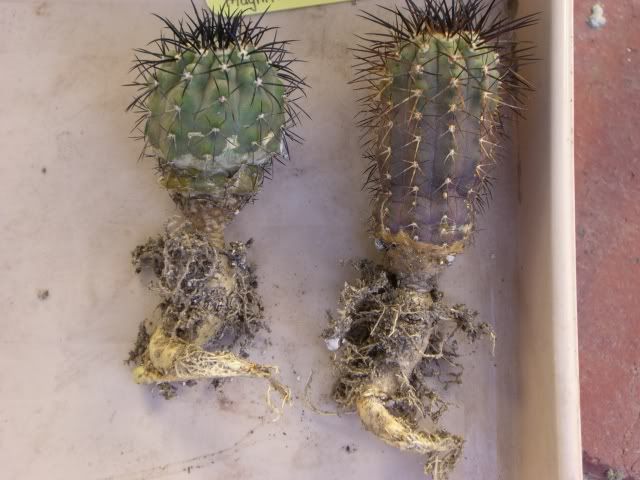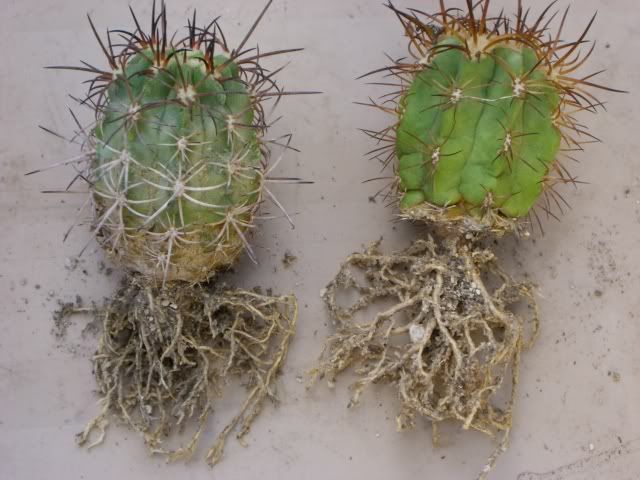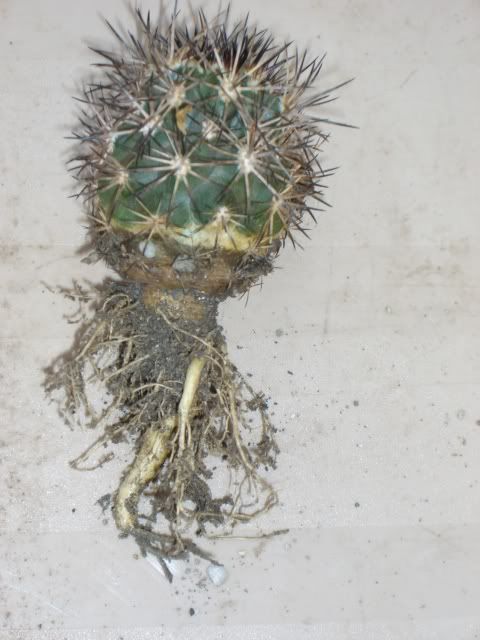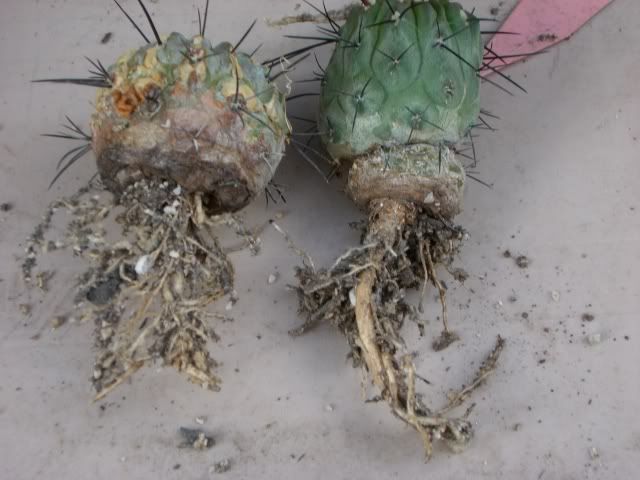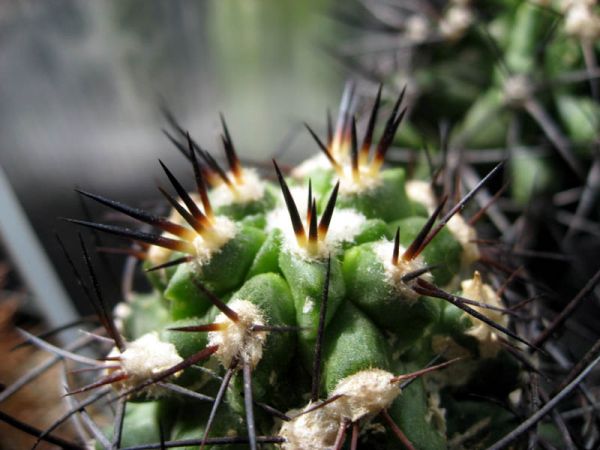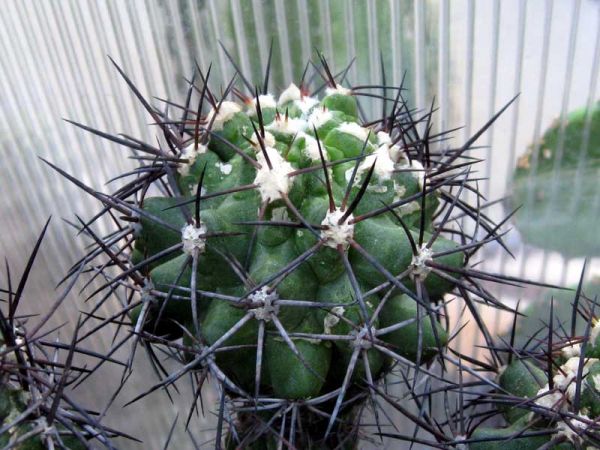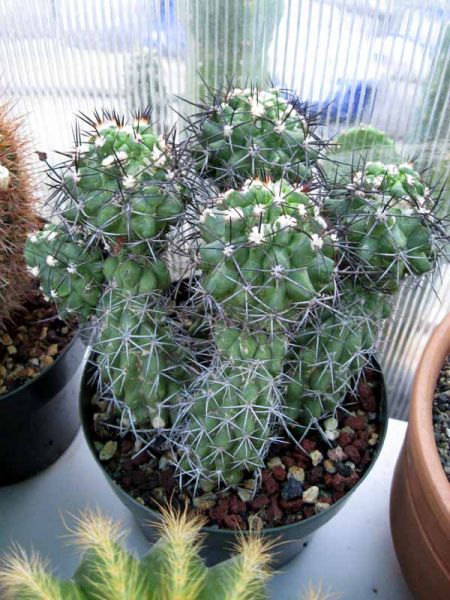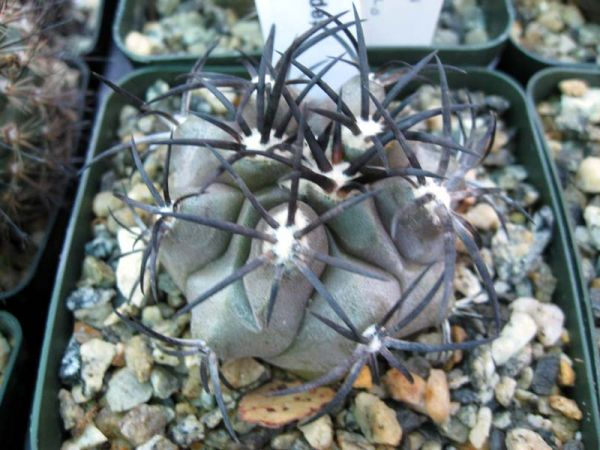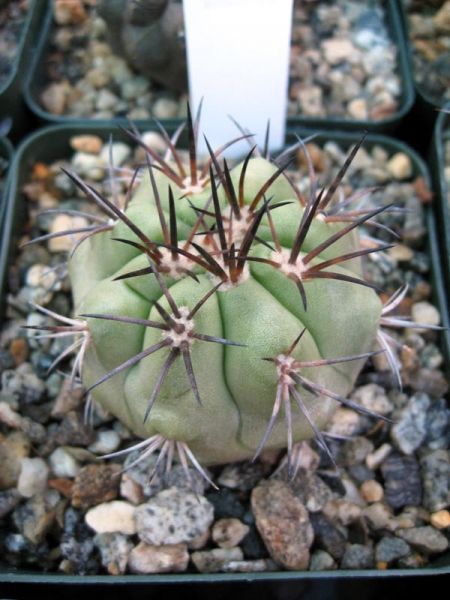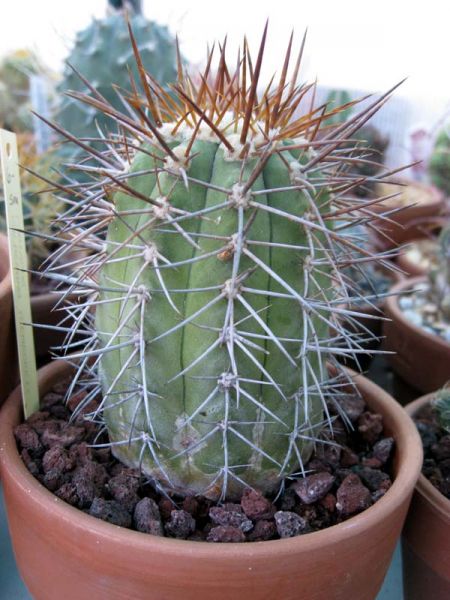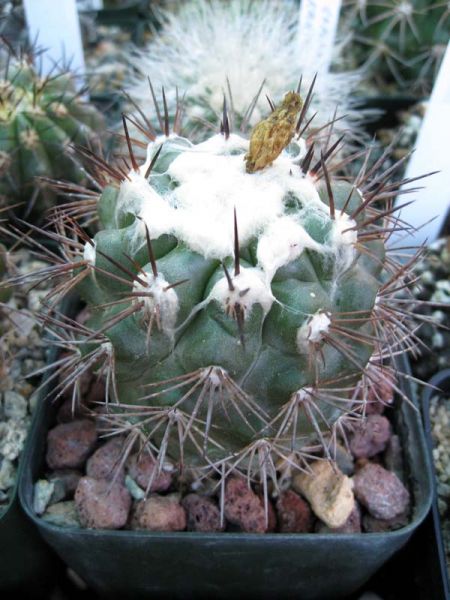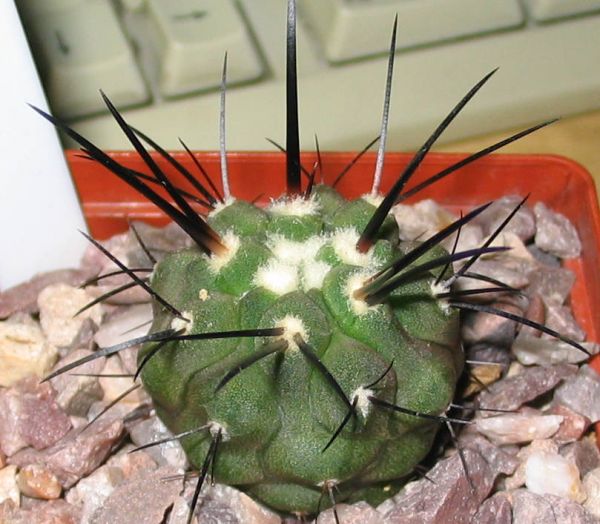1. The mis-named plant isn't huge, so the spines aren't all that stout. I have a smaller ssp tocopillana, but it isn't really comparable. No sign of ribs, but still a fair-sized set of roots. C. humilis is astonishingly variable, yet only four subspecies are recognised and no huge list of synonyms.
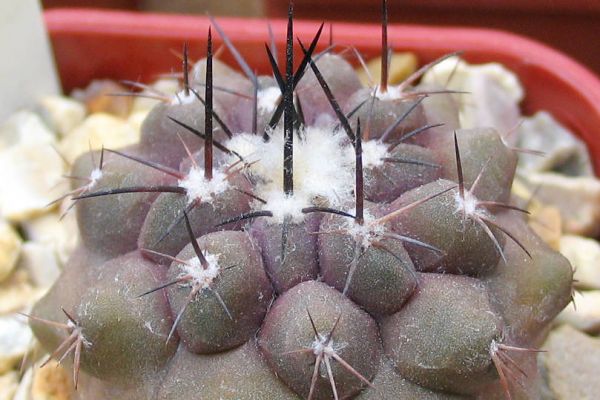
2. The plants that are usually called C. albispina are big like C. cinerea with just a few pale spines, quite striking. This is much closer to C. krainziana and I think there is more or less a continuous variety between the two subspecies if you look hard enough.
3. C. bridgesii has more defined ribs and black spines, not so strong. Here's a little one I just snapped with flash, but already the tubercles are almost lost in the rubs.
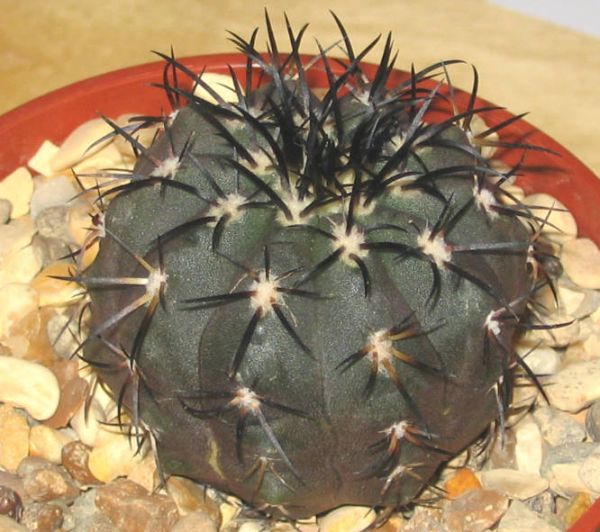
Maybe a C. echinoides that hasn't really settled its rubs? Here's one (C. dura) almost exactly the same size and it doesn't really look the same. C. echinoides is considered to have only fibrous roots like my plant.
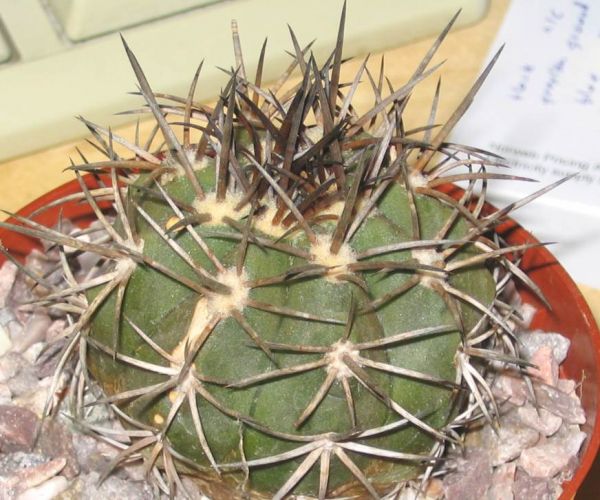
C. coquimbana roots are an interesting one. The descriptions are consistent that it has enlarged roots, described as "turnip-like" or "strongly tuberous". It is grouped with C. megarhiza as having a "swollen, tuberous" root. I have a couple of confirmed C. coquimbana plants and a probable, and none of them have particularly enlarged roots, certainly nothing on the scale of C. humilis, C. hypogaea, or C. megarhiza. C. coquimbana today does cover a lot of different plants, but I'd welcome any information that people can offer about the roots on their C. coquimbana plants.
4. I find descriptions of Copiapoa taproots can be a little confusing sometimes. For example, C. cinerea is described as having a woody taproot, yet it isn't very noticeable and to all intents and purposes the species has fibrous roots. You could say it has a taproot in the same way that a Saguaro has a taproot, there is a stiff root going down for stability on large plants but it is nowhere near the size of the plant body and does not form a significant fraction of the root system. C. humilis is sometimes described as having a taproot, yet what it actually has is highly thickened tuberous roots often much larger than the plant body, certainly not a long single root going straight down. C. megarhiza on the other hand, also described as having swollen fleshy roots, tends to a very long single root going straight down, not as white and fleshy as on C. humilis. Sometimes it may develop a shorter thicker root more like a turnip than a carrot.
